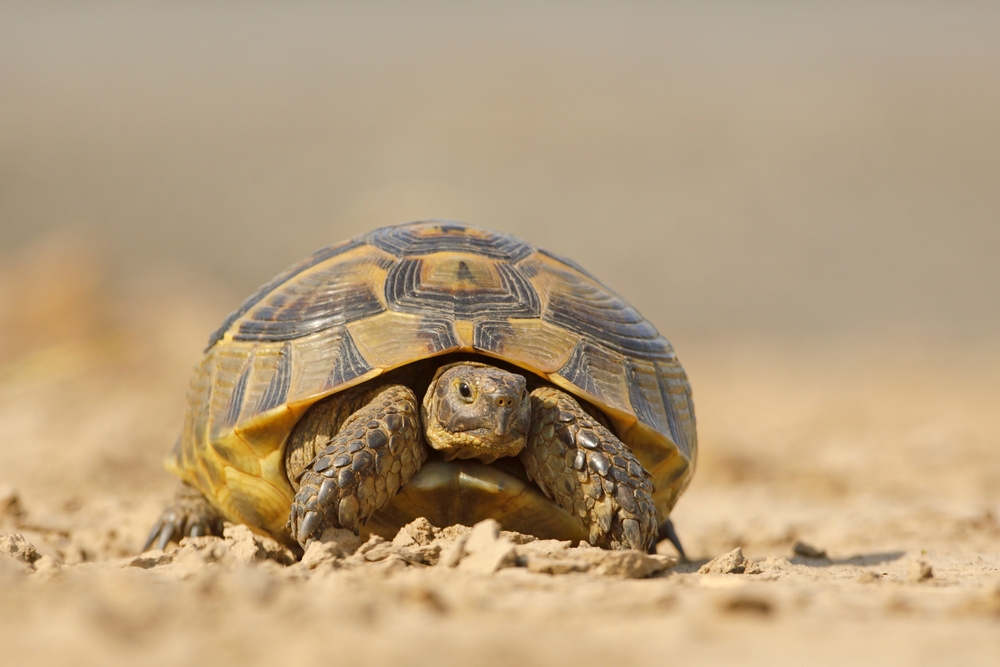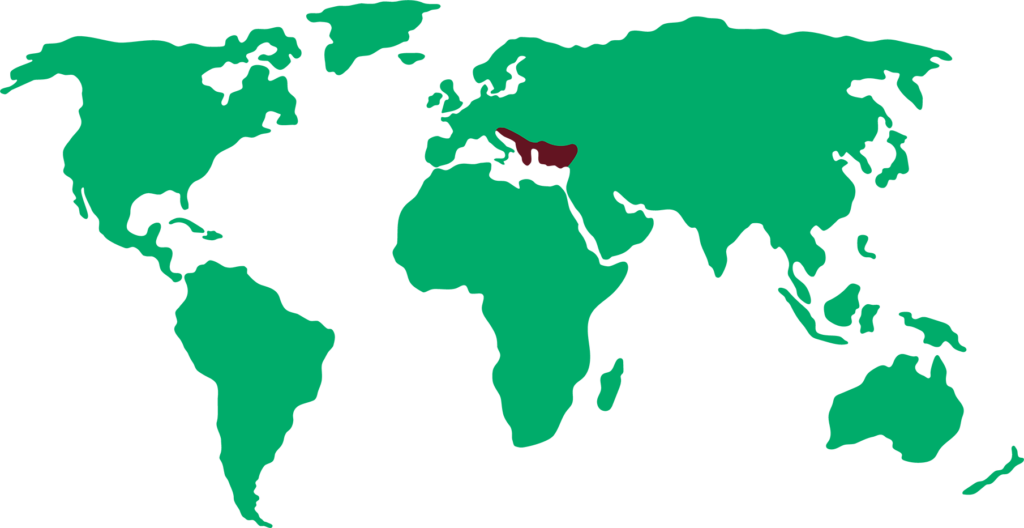HERMANN´S TORTOISE
Testudo hermanni

LENGTH

18 cm
WEIGHT

4 kg
LIFESPAN

80 years
The Hermann´s tortoise is a species of terrestrial tortoise found in southern Europe. They can generally reach ages comparable to humans.
General characteristics
These turtles are small-medium sized, with a high, domed carapace that allows them to protect themselves from predators. It is composed of bony plates covered with keratin, the same protein that makes up human fingernails.
The colour of the carapace can be varied, but is generally brown or black with yellow or orange spots on the edge of the plates. The skin of tortoises is also dark brown or black and has a scaly texture. The eyes are large and round, and the limbs are strong and well developed for walking on land.
They are very similar to the spur-thighed tortoises, but can be distinguished by the horny sheath at the apex of the tail, as Hermann´s tortoises do not have these and the others do.
Feeding
They are mostly herbivores and feed on a variety of plants and fruits. They may also eat small arthropods, as they need to maintain a diet rich in calcium.
Behaviour
It is a solitary land tortoise that prefers to live in open areas with abundant vegetation and natural refuges, such as bushes, shrubs and rocks. Although they are calm and peaceful animals, they can also be territorial with other members of their species, especially males during the mating season.
They are diurnal, so they are most active during the day and tend to sleep at night. They spend much of their time foraging for food, basking in the sun and exploring their environment. Being ectothermic animals, the sun is important for accelerating their metabolic functions.
In autumn, as temperatures drop, tortoises stop feeding for up to twenty days to empty their intestines of leftover food. In November or December, they bury themselves or take refuge in sheltered places and go into hibernation.
Reproduction
They reach sexual maturity at new years of age. Between May and July, females lay between two and twelve eggs in nests dug in the ground. The eggs incubate for 2 to 3 months.
The sex of the young varies depending on the ambient temperature. Hatchlings emerge just after the onset of heavy autumn rains in early September. If the rains do not come or if nesting took place late in the year, the eggs will not yet hatch, but the hatchlings will remain underground and will not emerge until the following spring.
Threats
Hermann´s tortoises are at risk of extinction in the wild due to anthropogenic factors such as agriculture, pesticide use, fires, environmental destruction, urbanisation, illegal capture and the threat of new predators.
Distribution
It is a species that only inhabits southern Europe, extending from eastern Spain to Romania. They have a Mediterranean climate and find refuge in low vegetation.

Did you know?
The hibernation temperature should be maintained at around 5°C.
They have excellent eyesight. They can distinguish shapes, colours and even people.
They communicate with each other by means of low-frequency vibrations.
Conservation status
